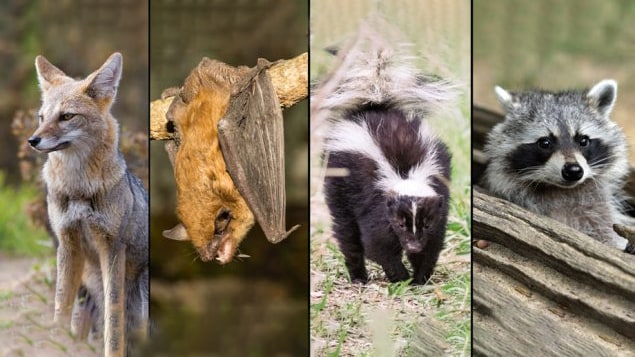Key points
- Rabies is a viral disease that is deadly in people if medical care is not received before symptoms start.
- Rabies is spread to humans and pets primarily through bites or scratches from an infected animal.
- Rabies control measures in the United States have significantly reduced rabies as a public health threat.
- Each year 60,000 Americans receive medical care following a potential rabies exposure.
More Information

What you need to know
Rabies is a fatal but preventable viral disease. It can be spread to people and pets through the bites and scratches of an infected animal. Rabies primarily affects the central nervous system, leading to severe brain disease and death if medical care is not received before symptoms start.
Immediate medical attention following suspected rabies exposure is critical. Medical care following a rabies exposure is called post-exposure prophylaxis or PEP. PEP includes wound care, a dose of human rabies immune globulin (HRIG), and a series of four or five rabies vaccines, which must be administered as soon as possible after exposure. This care is vital to prevent the disease from developing. It is nearly 100% effective if administered promptly. Each year, 60,000 Americans receive PEP after a potential rabies exposure.
The disease is rare in humans in the United States, with fewer than 10 deaths reported each year. Still, rabies poses a serious public health threat, because of its high death rate in people. It is also present in many wildlife species, nearly 3 in 4 Americans live in a community where raccoons, skunks, or foxes carry rabies.
Animals and rabies
In the United States, more than 90% of reported cases of rabies in animals occur in wildlife. Contact with infected bats is the leading cause of human rabies deaths in this country; at least 7 out of 10 Americans who die from rabies in the US were infected by bats. The animals most often found with rabies in the U.S. include:
- bats
- raccoons
- skunks
- foxes
While rabid dogs in the US are uncommon, around the world, domestic dogs are responsible for more than 95% of the estimated 70,000 human deaths that occur each year.
People at risk
People who are at increased risk for rabies exposures may want to consider pre-exposure vaccination for increased protection.
People who travel
Since 1990, over 80 people have died from rabies after an exposure during travel. Rabies is prevalent globally except in Antarctica. In Africa, Asia, and specific areas of Central and South America, rabies in dogs is still a major problem. Additionally, access to PEP may be hard to get in those places. As a result, tens of thousands of people die of the disease each year.
When traveling, it is important to keep your distance from wild and unfamiliar animals, including dogs and cats.
Before traveling abroad, consult your doctor, a travel clinic, or your local or state health department about your risk of exposure to rabies.
People who participate in certain leisure activities
People who enjoy outdoor certain outdoor activities that may lead to contact with wildlife, such as spelunking, camping, and hunting are at higher risk of being exposed to rabies, because they may encounter wildlife while participating in these activities.
People who have jobs with animals
People with jobs that involve frequent animal contact, such as veterinary professionals (including technicians), animal control workers, wildlife researchers, wildlife rehabilitation workers, and certain agricultural workers, are at increased risk of a rabies exposure. People who work with or are exposed to wild animals could encounter a wild animal with rabies. People who work with pets may be exposed if a pet is not vaccinated for rabies and/or has encountered a wild animal with rabies.
Prevention
Rabies prevention efforts by veterinary, wildlife management, and public health professionals mean that human cases of rabies in the U.S. are rare. Veterinarians vaccinate over 40 million cats and dogs each year, and these vaccinations significantly reduce the risk of you or your pets getting rabies. Each year, wildlife management professionals distribute oral vaccines to wildlife, through baits, to control rabies at its source, especially in areas where rabies in wild animals is common.
The best way you can prevent rabies is by:
- Making sure your pets are up-to-date on their rabies vaccines;
- Keeping wildlife wild - stay away from wildlife for both human and animal safety;
- Calling animal control to remove stray animals from your neighborhood;
- Washing bites or scratches immediately with soap and water; and
- Seeking medical care shortly after potential exposures.
Around the world, large-scale dog vaccination programs are the most effective way to prevent rabies. However, in many countries, there aren't enough resources to reach all the dogs that need it. CDC works with public and private partners to improve vaccine access for people and animals, making travel safer and improving global health.
